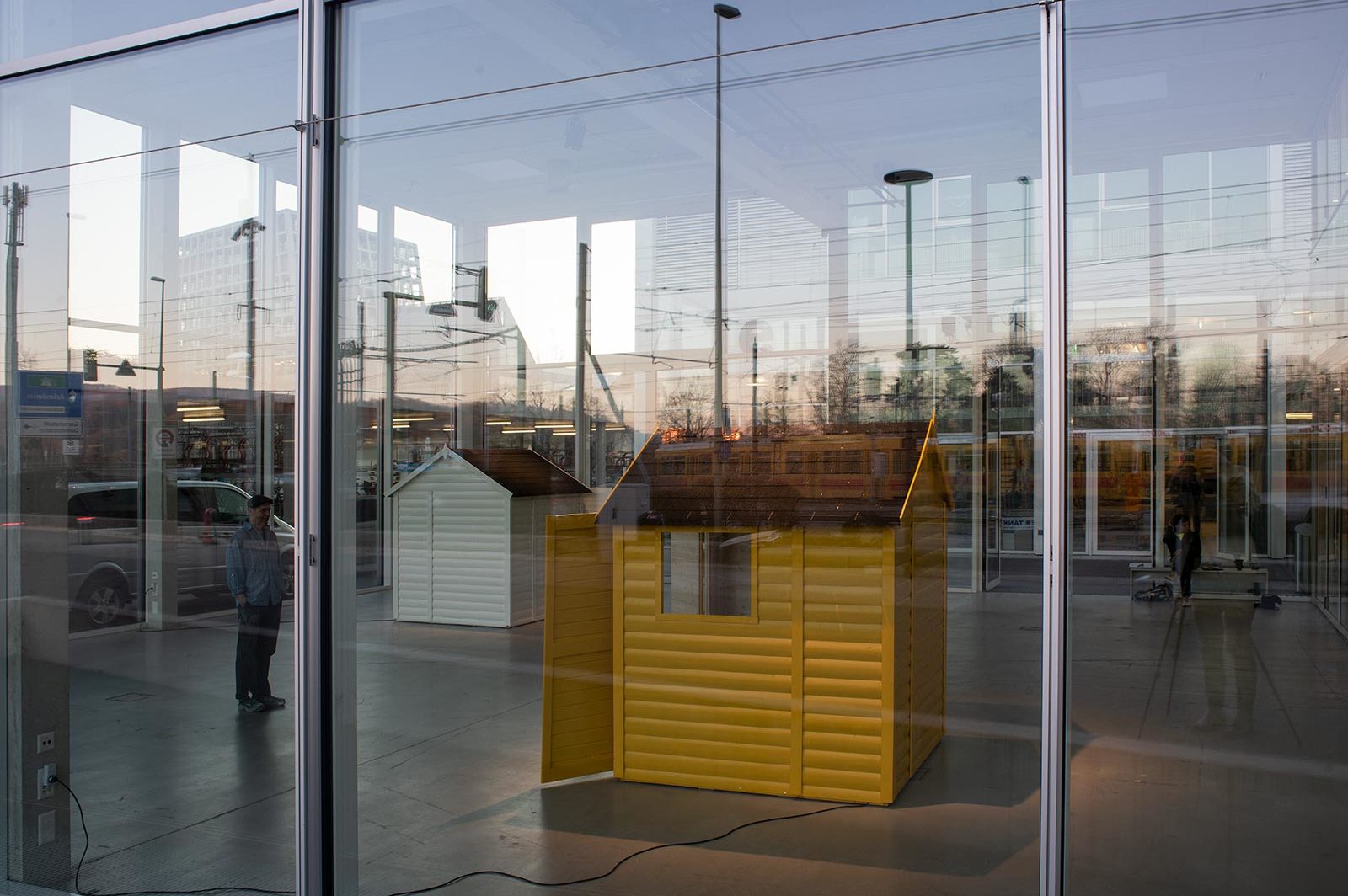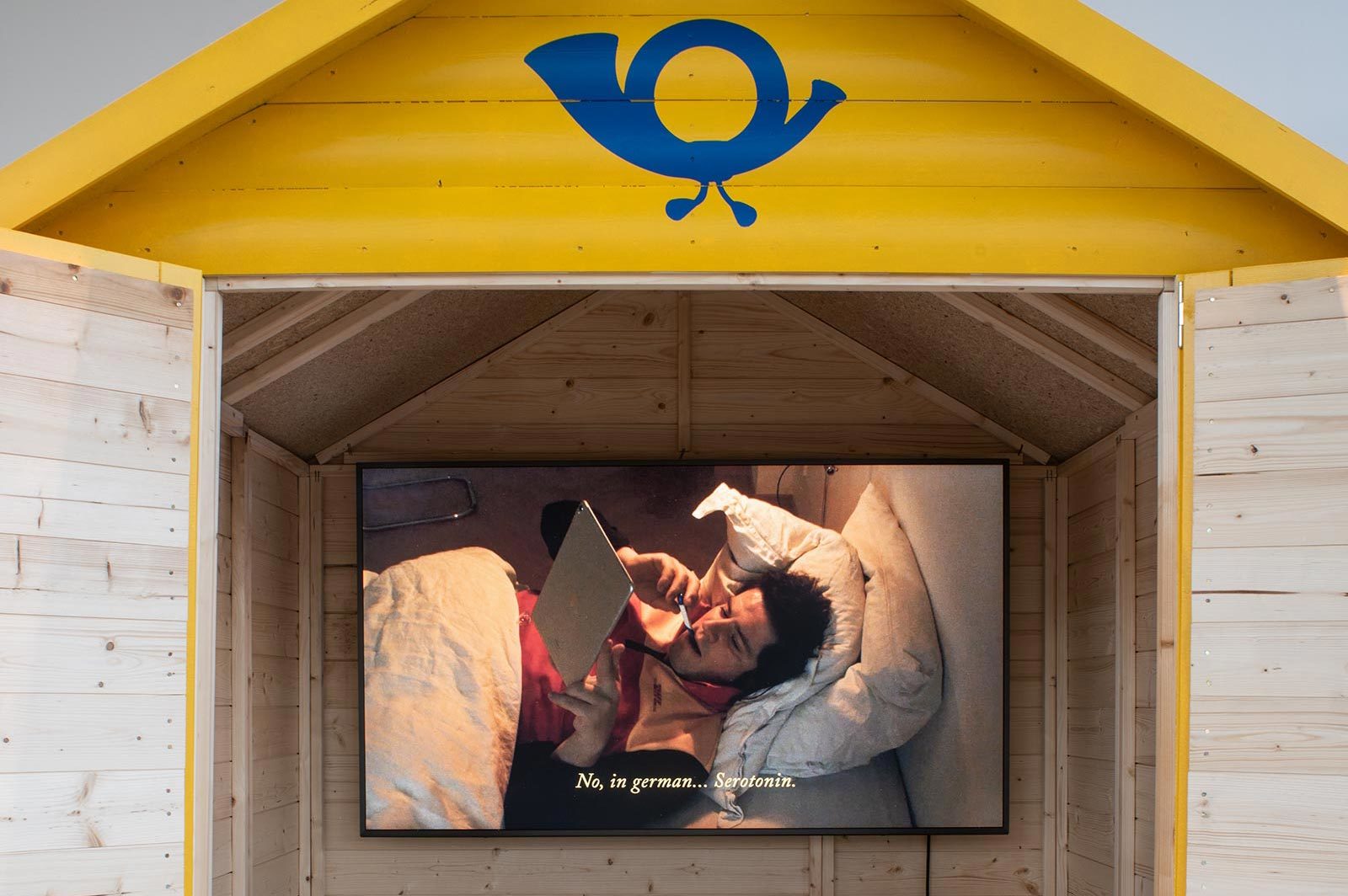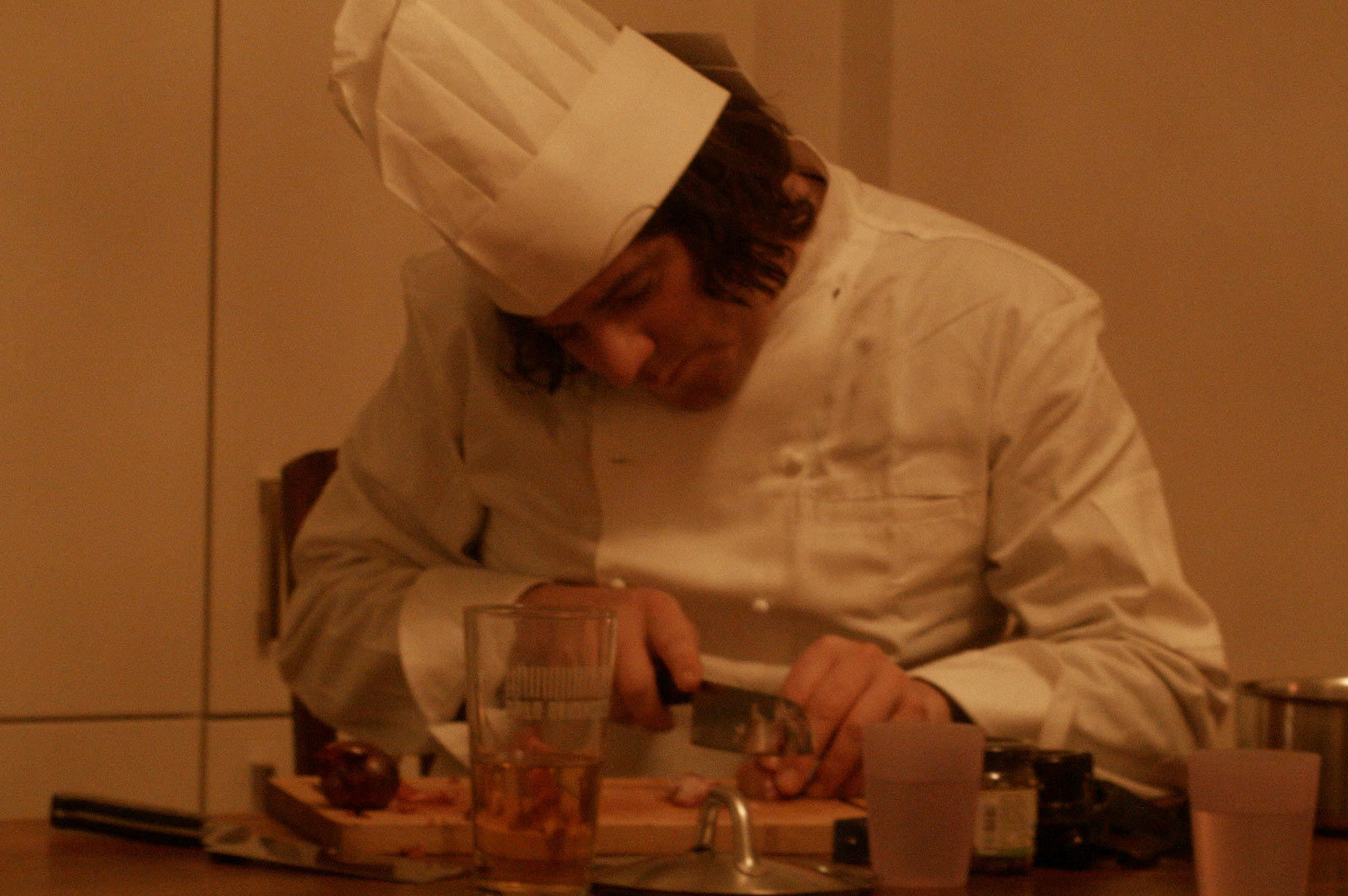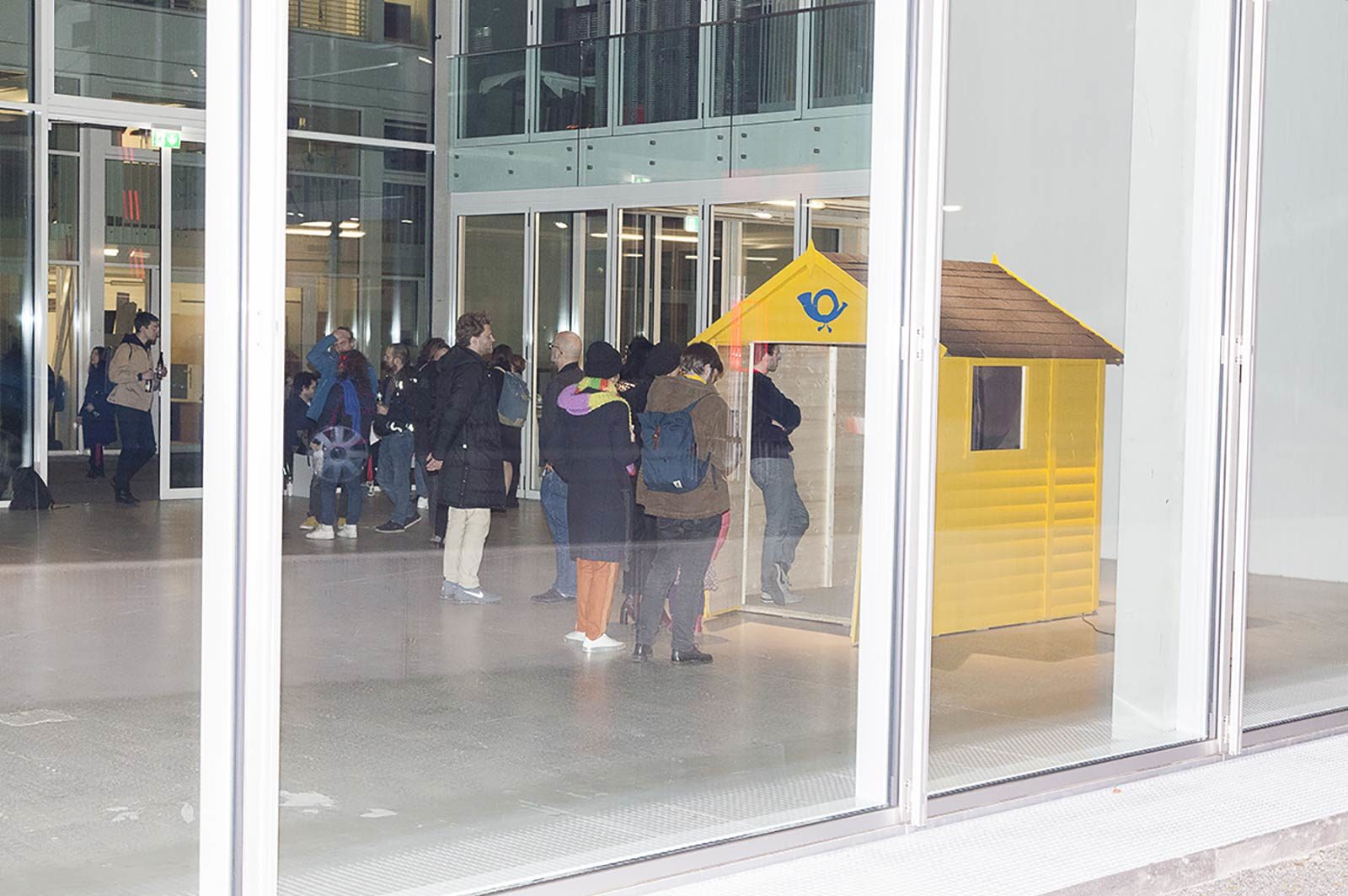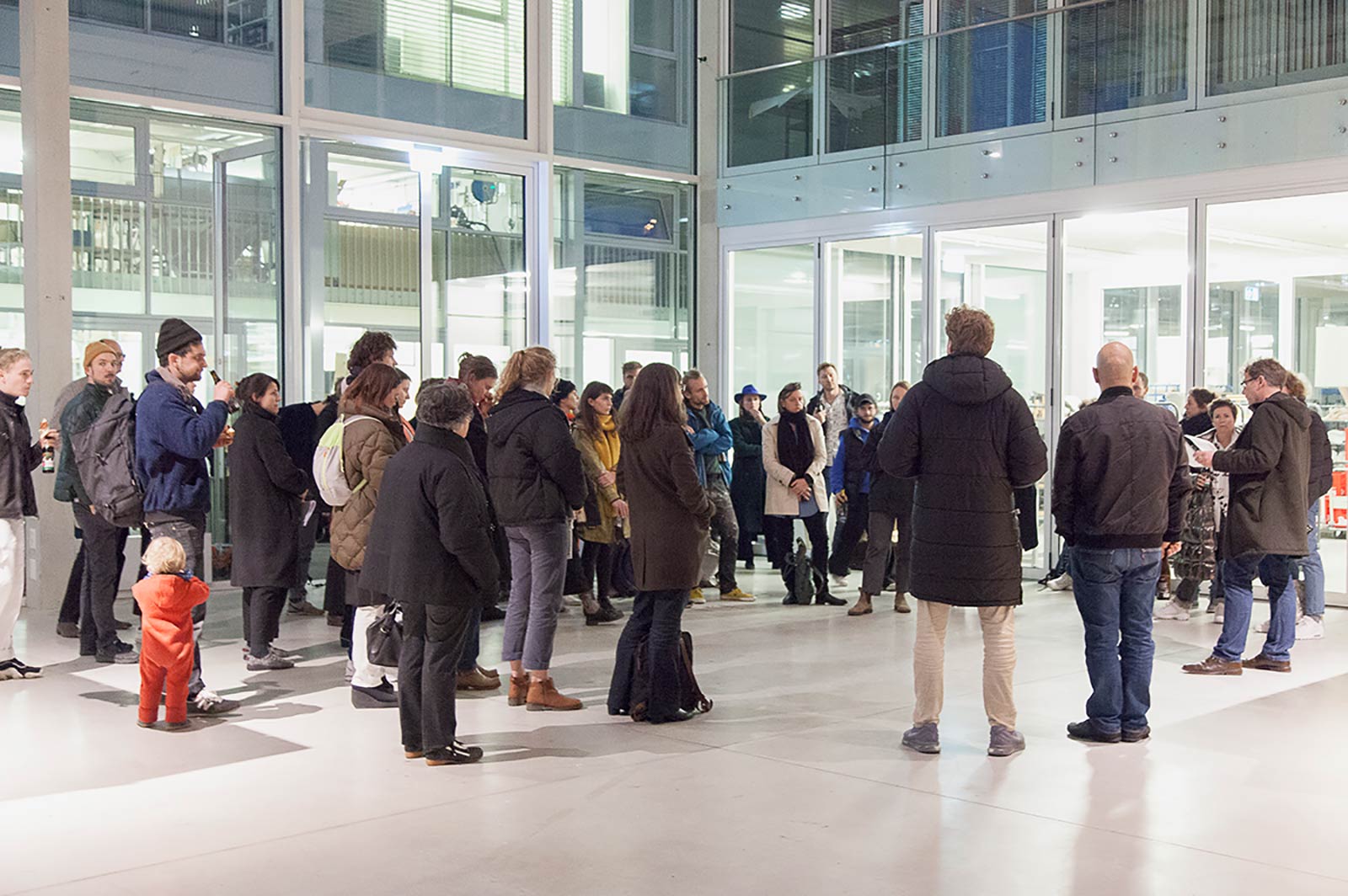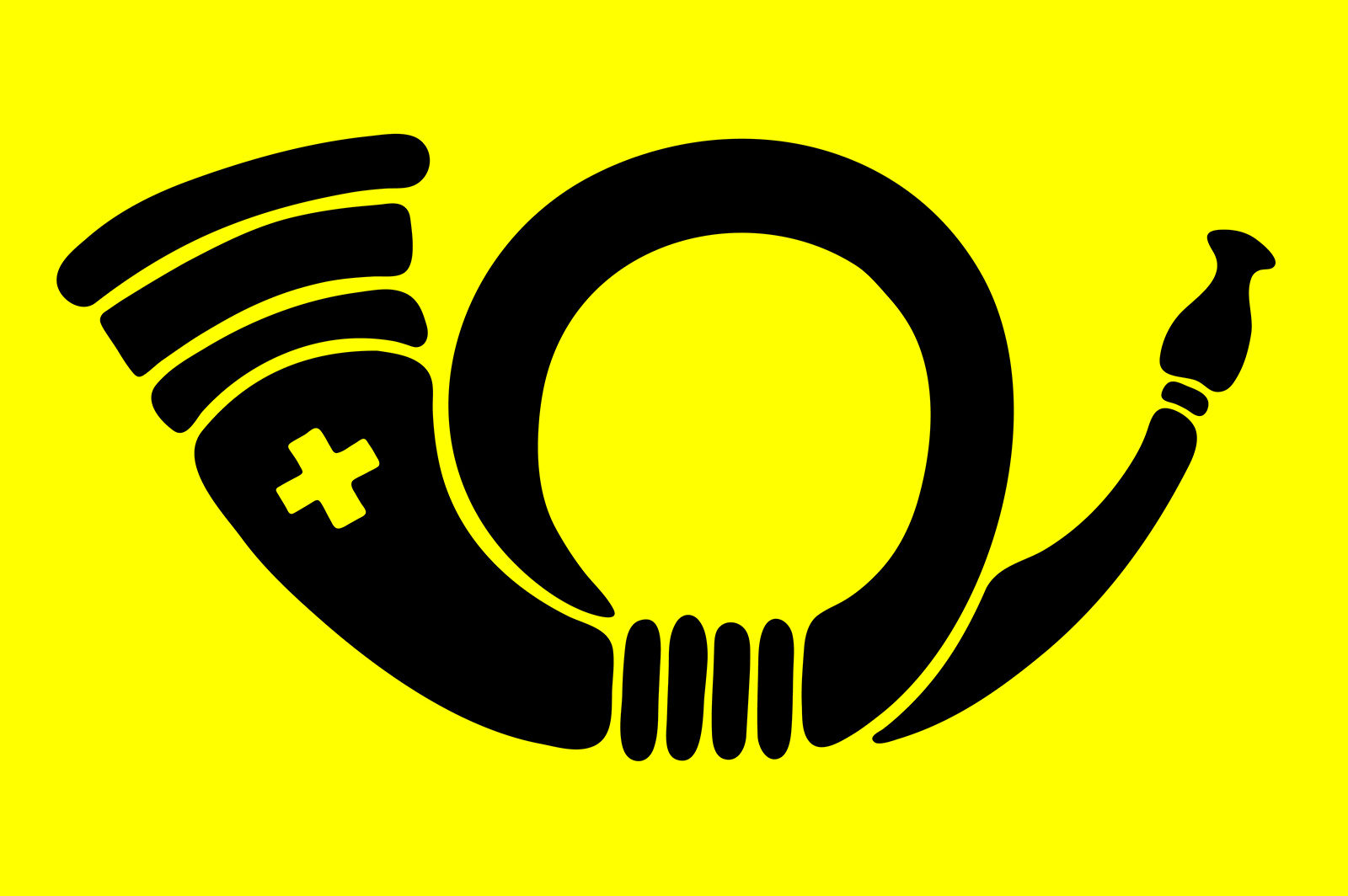The Commissions
Kaspar Müller
Rendering of service in the pitch of the bruise
23. Februar bis 3. März 2019
Kuratiert von Roman Kurzmeyer
Mainland
Der Campus der Künste, auf dem sich der Ausstellungsraum der TANK befindet, wird von der Hochschule für Gestaltung und Kunst FHNW als ein kulturell-kreatives Cluster verstanden, das sich ständig verändern und optimale Bedingungen für unterschiedliche Akteure bieten soll. Neben der Hochschule mit ihren ungefähr 1’000 Studierenden befinden sich auf diesem neu entwickelten städtischen Ballungsraum auch das Haus für elektronische Künste Basel (HeK), die Bibliothek für Gestaltung und die Plakatsammlung der Schule für Gestaltung, das Jacques Herzog und Pierre de Meuron Kabinett, kleine private Firmen im Bereich der Kreativwirtschaft sowie Wohnungen und Büroflächen. In Nachbarschaft zur Hochschule liegen die Merian Gärten und das Schaulager. Auf dem Campus der Künste gibt es bislang keine Lebensmittelgeschäfte, auch keine Bar, kein Warenhaus, keine Kindertagesstätte, keine Poststelle und keine Ärztehaus, denn der Campus konzentriert sich inhaltlich und räumlich auf Design, Kunst und Medien.
Der verglaste Ausstellungsraum ist die Antithese zum White Cube. Es handelt sich um öffentlichen Raum. Die Welt wird nicht ausgeschlossen. Glaswände lenken den Blick nach aussen, machen den Raum aber auch für Passanten einsehbar. Die Ausstellung von Kaspar Müller nutzt den TANK als Vitrine, um das Cluster weiterzuentwickeln. Er bringt eine Poststelle und ein Ärztehaus auf den Campus. Es ist ein Bluff. Untergebracht sind die Services in identischen, industriell vorgefertigten kleinen Holzschuppen für Schrebergärten, die der Künstler in einem Baumarkt erworben und zu hell ausgeleuchteten Kulissen umgestaltet hat. Die Fassade der Postdienststelle ist ginstergelb, jene der Praxis zinkweiss gestrichen und jeweils mit einem weit sichtbaren Signet versehen. In den beiden Geräteschuppen, die Platz für drei, vier Personen bieten, ist auf je einem Flachbildschirm sein neuer Film Rendering of service in the pitch of the bruise(2019) zu sehen. In der Hauptrolle erleben wir Timothy Lee Standring, der drei Figuren spielt: einen Arzt, einen kranken Postmitarbeiter und einen Koch, der für eine Kleinfamilie ein Abendessen zubereitet.
Der Künstler und Ausstellungskurator Peter Weibel hat 1996 in Anlehnung an den US-amerikanischen Kulturkritiker Gilbert Seldes von der postindustriellen Gesellschaft als neuem «Mainland» gesprochen, das nach einem veränderten Kulturbegriff verlange und in der Kunst neue Werkformen und Vermittlungsformate hervorbringen werde. Zur «Logik der Kultur im Spätkapitalismus» gehöre «die universale Ausdehnung von Kultur (alles wird Kunst, jeder wird Künstler) und die universale Verwandlung von allem in Ware, auch der Kunstwerke.» Die Ökonomisierung umfasst längst auch Bereiche wie Bildung, Gesundheit, Kommunikation und Verkehr, also die Grundversorgung der Menschen mit lebenswichtigen (kulturellen) Gütern und Diensten. Der Film von Kaspar Müller konfrontiert uns mit dieser Situation und dem Arbeitsbegriff der postindustriellen Gesellschaft. Er thematisiert die Folgen der totalen Ökonomisierung der Gesellschaft und handelt von prekären Arbeitsbedingungen.
Arbeit wird erst seit dem 19. Jahrhundert positiv bewertet. Es war der französische Philosoph Jacques Rancière, der daran erinnert hat, dass die Kunst bei dieser Umwertung einen bedeutenden Anteil hatte, weil sie «die traditionell gegensätzlichen Begriffe von herstellender Tätigkeit und Sichtbarkeit in einem Konzept vereinigt». Rendering of service in the pitch of the bruise ist eine Ausstellung, die diesen positiven Arbeitsbegriff, auf den sich beispielsweise auch Thomas Hirschhorn in seinem Werk bezieht, an einem Ort zur Diskussion stellt, an dem viele junge Menschen sich ein Leben als Künstlerin oder Künstler wünschen.
Roman Kurzmeyer
Fotos:
- Kaspar Müller, Rendering of service in the pitch of the bruise (still), 2-canal video installation (starring Timothy Lee Standring), 2019. Courtesy the artist
- Ausstellungsansichten: Guadalupe Ruiz und Christian Knörr
The Commissions
Kaspar Müller
Rendering of service in the pitch of the bruise
February 23 – March 3, 2019
Curated by Roman Kurzmeyer
Mainland
The FHNW Academy of Art and Design views the Campus of the Arts, where der TANK exhibition space is located, as a cultural and creative cluster that is intended to change constantly and offer optimal conditions for various stakeholders. In addition to the university with its approximately 1,000 students, this newly developed urban agglomeration includes the House of Electronic Arts (HeK), the Library of Design and the poster collection of the School of Design, the Jacques Herzog and Pierre de Meuron Cabinet, and small private companies in the creative industries, as well as apartments and office spaces. Located near the university are the Merian Gardens and the Schaulager museum. So far, on the Campus of the Arts there are no grocery stores, no bar, no department store, no daycare center, no post office, and no medical center, because the campus focuses on design, art, and media in terms of both content and space.
The glass-fronted exhibition space is the antithesis of the White Cube. It is public space. The outside world is not shut out. Glass walls steer one’s gaze toward the outside, but also mean that passers-by can look in. The exhibition by Kaspar Müller uses TANK as a glass showcase to advance the cluster. He has brought a post office and a medical center to the campus. It is a bluff. The services are housed in identical, industrially prefabricated, small wooden sheds for allotment gardens that the artist bought from a hardware store and transformed into brightly illuminated backdrops. The post office facade is gorse yellow, that of the doctor’s office is zinc white, and each are furnished with a highly visible emblem. His new film Rendering of service in the pitch of the bruise (2019) will be shown on each flat screen in the two tool sheds, which are big enough for three or four people. We watch Timothy Lee Standring in the lead role playing three characters: a doctor, a sick postal employee, and a cook preparing a dinner for a nuclear family.
In 1996, the artist and exhibition curator Peter Weibel—in the style of the American cultural critic Gilbert Seldes—referred to postindustrial society as a new “mainland” that longed for an altered concept of culture and would create new forms of work and mediation formats in art. The “universal expansion of culture (everything becomes art, everyone becomes an artist) and the universal transformation of everything into commodities, even artworks” are part of the “cultural logic of late capitalism.” Economization has long included areas such as education, health, communication, and transport, namely providing people with essential (cultural) goods and services. Kaspar Müller’s film brings us face to face with this situation and postindustrial society’s concept of labor. He discusses the consequences of the total economization of society and addresses precarious working conditions.
Work has only been considered as something positive since the nineteenth century. It was the French philosopher Jacques Rancière who reminded us that art played a significant role in this revaluation, because it unites “the traditionally opposing concepts of manufacturing activity and visibility in one idea.” Rendering of service in the pitch of the bruiseis an exhibition that stimulates discussion about this positive concept of labor, which Thomas Hirschhorn also refers to in his work for example, in a place where many young people desire a life as an artist.
Roman Kurzmeyer
Photos:
- Kaspar Müller, Rendering of service in the pitch of the bruise (still), 2-canal video installation (starring Timothy Lee Standring), 2019. Courtesy the artist
- Exhibition view: Guadalupe Ruiz und Christian Knörr






